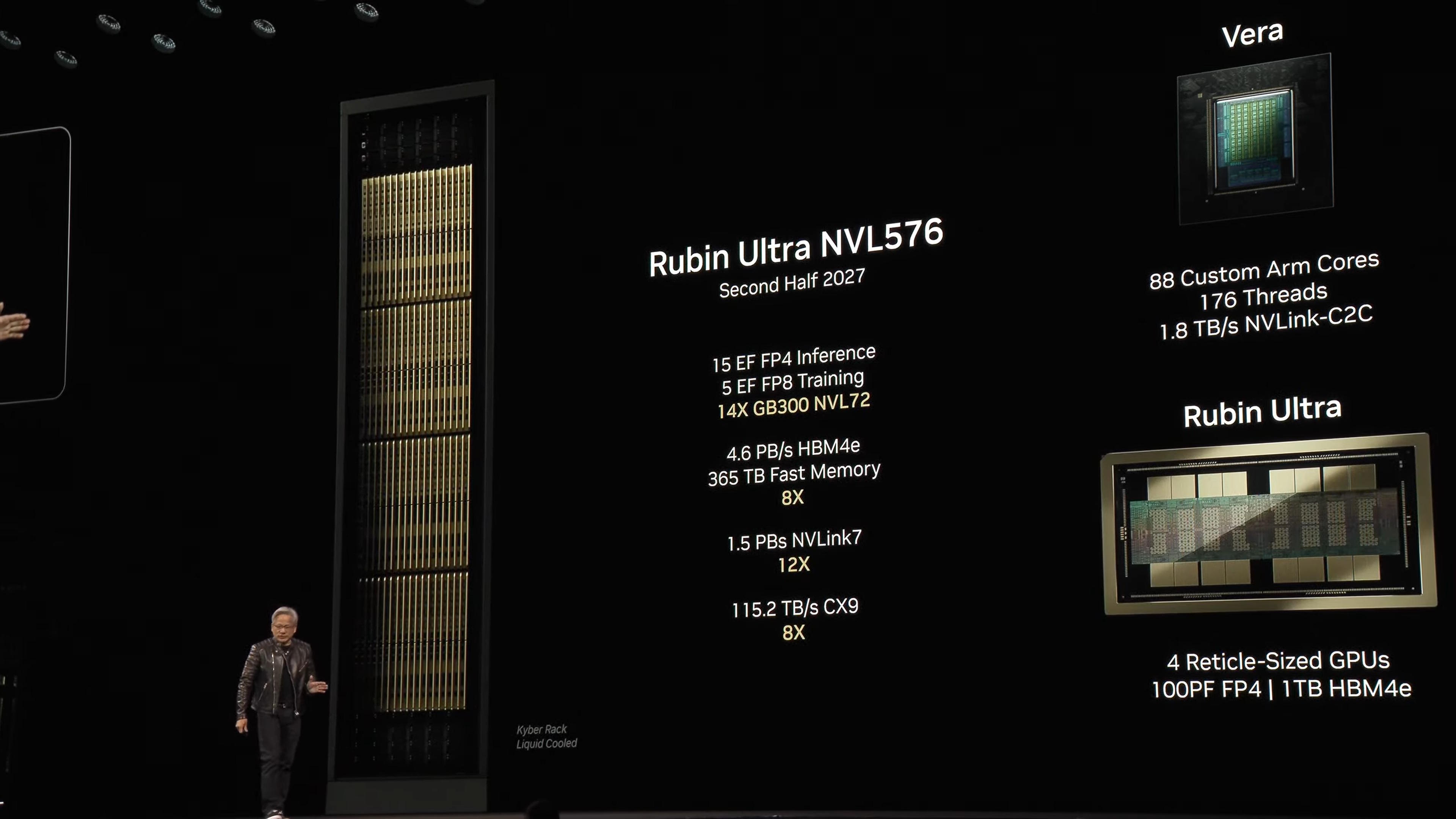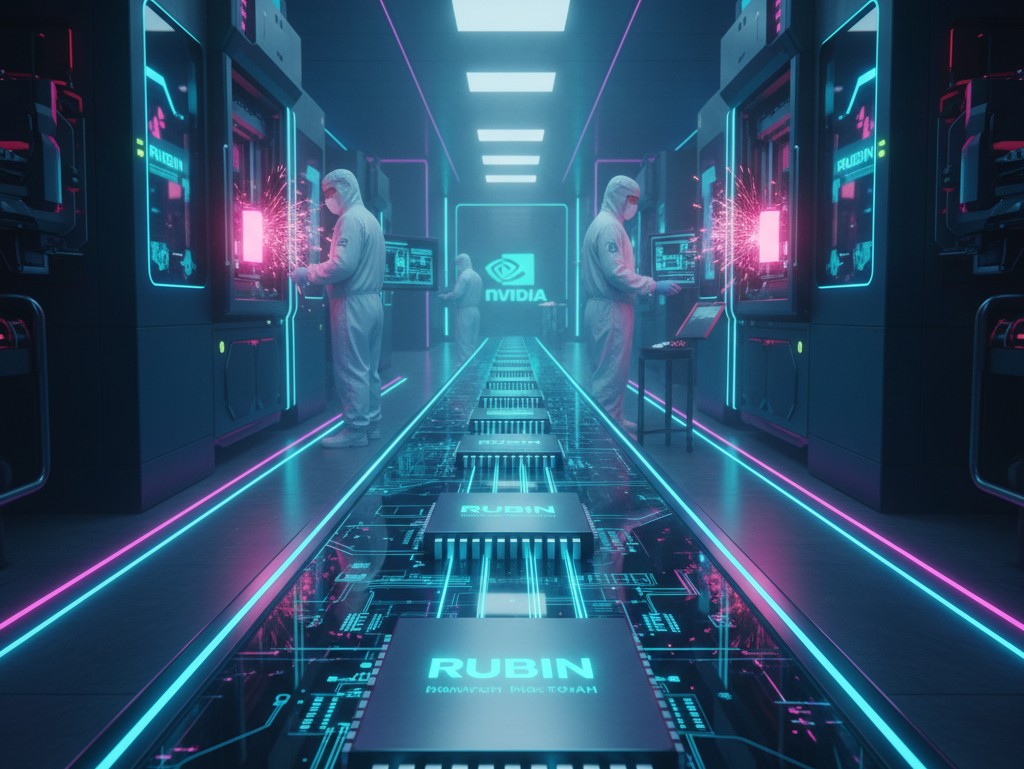In the world of artificial intelligence (AI) and high-performance computing, Nvidia, relentlessly pushing boundaries, is seemingly racing to break its own records. While the market was still fully processing the impact of the groundbreaking Blackwell architecture, Nvidia CEO Jensen Huang took the stage at Computex 2024 to drop the next bombshell: the Rubin GPU platform.
This announcement officially confirmed that Nvidia has now abandoned its two-year update cycle, adopting an aggressive "one-year" rhythm. Scheduled to enter our lives in 2026, Rubin is not merely an upgrade; it is opening the door to a new era in AI processing power. Named after Vera Rubin, the pioneering astronomer who proved the existence of "dark matter" in the universe, this new architecture is set to redefine the entire balance of the technology world.
Blackwell's Throne is Shaking: Why is Rubin So Important?
Nvidia's move signifies far more than a simple "faster chip" announcement. It is clear evidence of the market's insatiable demand for processing power. As AI models (especially Large Language Models - LLMs) grow exponentially, existing hardware is becoming insufficient for training and running these massive datasets.
A Strategic Answer to AI's Growing Needs
Rubin is a strategic platform designed precisely to overcome this "bottleneck." It promises to take Blackwell's performance and elevate it to an entirely new level. Nvidia's goal is not just to accelerate the GPU; by also introducing its new ARM-based CPU, codenamed "Vera," and the new NVLink 7 interface, it signals a complete ecosystem shift for data centers. This is a foundational move for the colossal processing demands of future AI.
Technical Revolution: Innovations Brought by the Rubin Platform
Breaking the Memory Wall: HBM4 is Coming
The first and most crucial topic to discuss about Rubin is this: HBM4 (High-Bandwidth Memory 4). Rubin will be the first GPU platform to utilize HBM4 memory technology. So, what does this mean?
Compared to existing HBM3e memories, HBM4 offers a much wider data path (2048-bit) and incredibly high bandwidth. This means that the massive data volumes required by AI models can be transferred to the GPU much faster. Nvidia has already partnered with giants like SK Hynix for this critical component. Rubin GPUs will feature 8 HBM4 stacks, while the "Rubin Ultra" model coming in 2027 will have 12 HBM4 stacks.
Full Integration with "Vera" CPU and NVLink 7
The Rubin platform is not just a single GPU. Nvidia will also introduce its new CPUs, codenamed "Vera," which will be the successor to the "Grace" CPUs, alongside this platform. In this system, to be called "Vera Rubin Superchip," the new generation NVLink 7 will be used to ensure communication between the GPU and CPU. This signifies a fully integrated system with unprecedented speed and efficiency in data centers.
The 1000W Limit: The New Era of Power and Cooling
This incredible performance comes at a cost: power consumption. While Blackwell GPUs operate at 700W-800W levels, Rubin GPUs are expected to exceed the 1000W (1 Kilowatt) limit. Managing this level of heat with traditional air cooling is impossible. Therefore, Rubin will make liquid cooling a necessity, not an option. Data centers will need to completely redesign their infrastructures for these new "AI factories."
Faster Than Expected: Rubin Chips Are Now In Production!
One of the most surprising developments concerns Rubin's timeline. While the 2026 target might seem distant, recent reports (as of November 2025) confirm that Rubin chips have entered their initial production phase.
Of course, this is not "mass production" that we will see on shelves tomorrow. This phase means that the first engineering samples, coming off TSMC's 3nm (or 4NP) lines, are being prepared for testing and validation. This critical development shows Nvidia's commitment to its late 2026 launch target and how aggressively it is managing its supply chain.
What Does It Mean for Artificial Intelligence (AI) and Data Centers?
Rubin's arrival in 2026 marks a revolution for AI operations. For data centers, this means much denser processing power per unit area; for AI developers, it means the removal of the hardware barrier to the models they envision.
Revolution in Training Times: Faster Discoveries
Rubin's most tangible impact will be its potential to increase Blackwell's processing power (in Petaflops) by 2.5 times. This means that model training that currently takes months could be reduced to weeks or days. This acceleration will unlock currently impossible innovations across all fields, from scientific research to autonomous vehicles.








